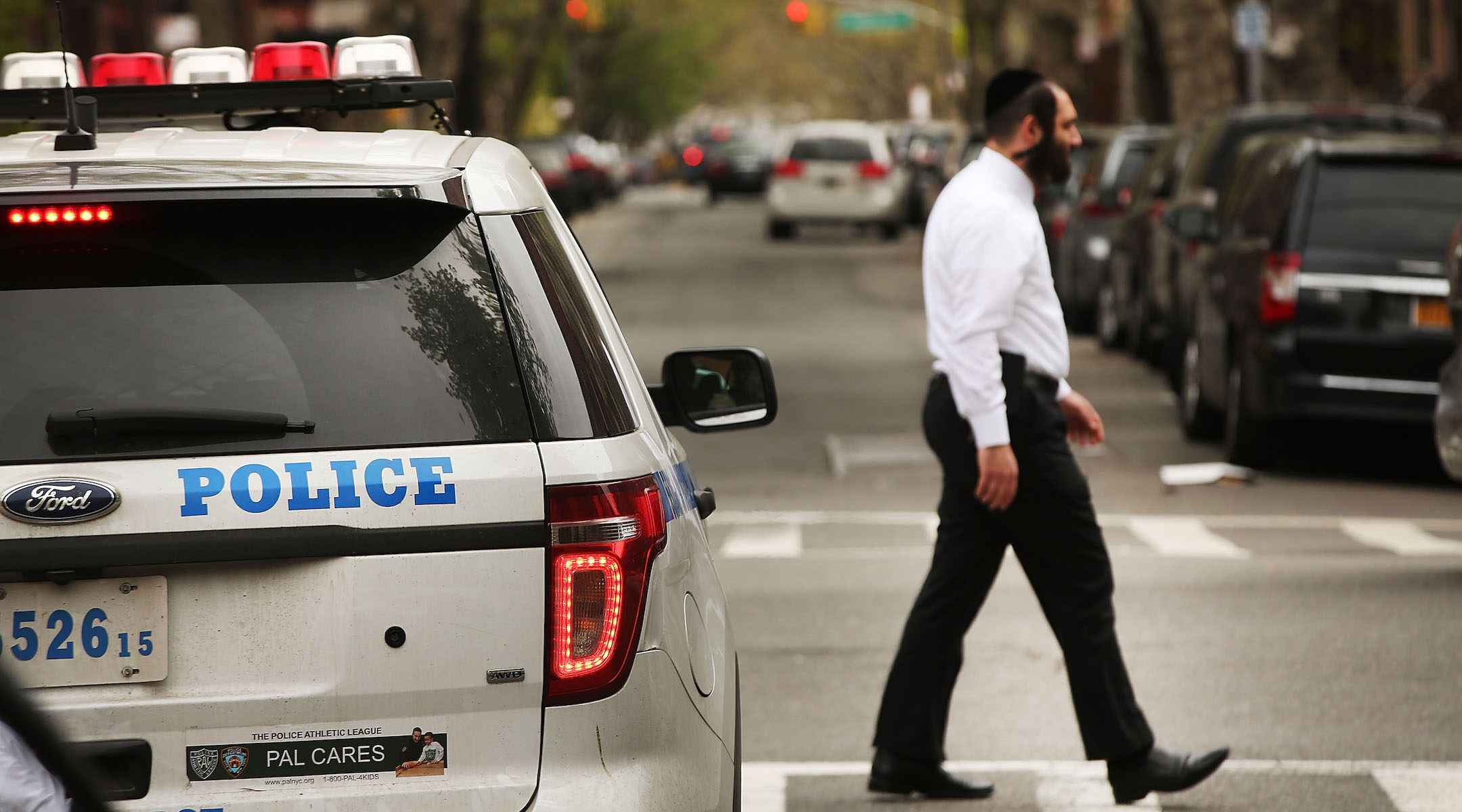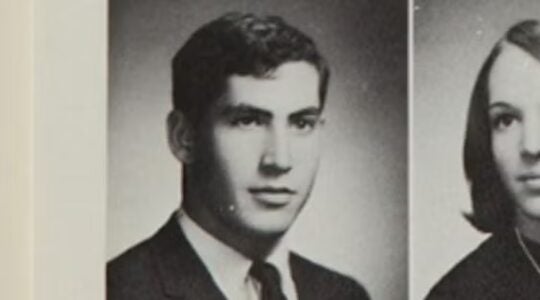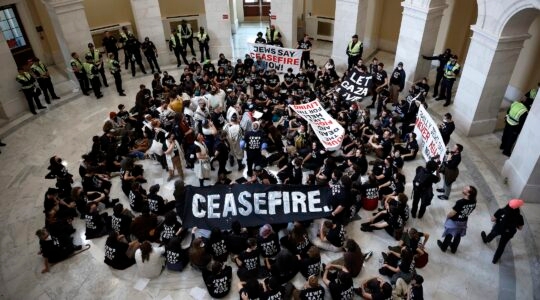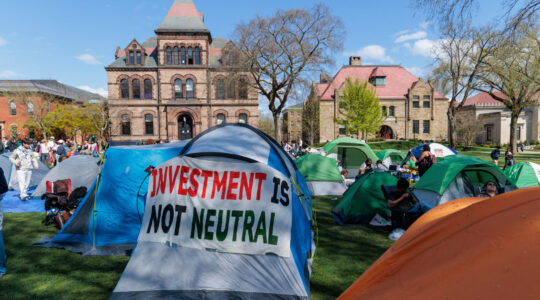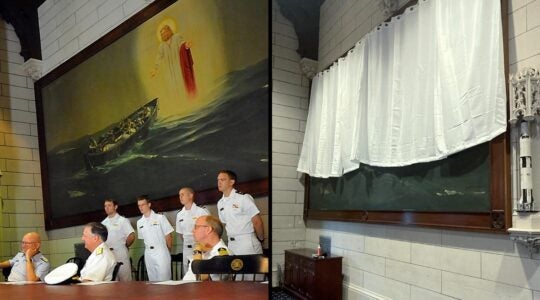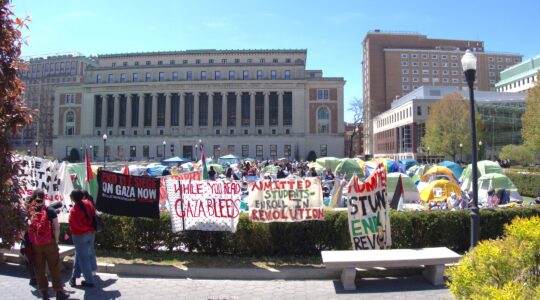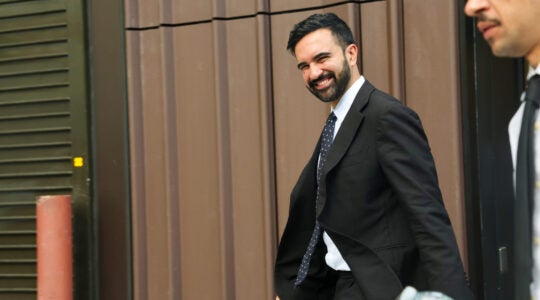NEW YORK (JTA) — When 25,000 Jews marched across the Brooklyn Bridge on Jan. 5, Evan Bernstein felt something he hadn’t experienced in weeks: optimism.
Not even a month earlier, he had prayed with the small Orthodox community in Jersey City, New Jersey, next to the spot where shooters had just killed three people at a kosher supermarket after gunning down a police officer.
Eighteen days later, when a man with a machete entered a rabbi’s home in Monsey, New York, and stabbed five people, Bernstein — then the New York-New Jersey regional director of the Anti-Defamation League — drove up immediately. After staying up half the night checking in on the community and talking to law enforcement and reporters, he slept in his car. Before and after the attacks, he’d been making trips to Brooklyn to respond to a string of anti-Semitic assaults on Orthodox Jews there.
Organized with days’ notice in protest of rising anti-Semitism in the city, the march held the potential of a new era. The governor and mayor were there, pledging a series of initiatives to curb hatred and safeguard more than a million Jews in the state and city.
Beyond the photo ops, the march evoked a hope that New York’s mosaic of Jewish communities would transcend their divisions — of politics, class and religious observance — to unite against the anti-Semitism plaguing Orthodox Jews. The route of the demonstration was meant to convey support from the more liberal Jews of Manhattan toward Brooklyn’s Hasidic neighborhoods.
The march across a bridge linking those two boroughs, UJA-Federation CEO Eric Goldstein said at the rally, symbolized a pledge to “begin building better bridges between all denominations of Jews.”
“When we had the march over the Brooklyn Bridge, we were making progress and anti-Semitism was becoming more of a mainstream topic,” Bernstein said. “We rarely ever saw the non-Orthodox community really seeing it as an issue or speaking out publicly about it.”
Later that month, the United States recorded its first case of COVID-19. The disease would go on to ravage the same Orthodox communities that had been victims of anti-Semitism. Some of those communities would go on to become symbols of resistance to social distancing regulations, prompting a new wave of hate.
And even as the number of anti-Semitic incidents decreased while the city shut down, the multiple upheavals of 2020 — from the pandemic to racial justice protests to the election — quashed any concerted effort at a united Jewish front against Jew-hatred.
Orthodox and non-Orthodox Jews across the New York City area told the Jewish Telegraphic Agency that a year after the Jersey City shooting, they feel neither more comfortable nor more united. People are off the streets, they said, but the danger is still there. And divisions within the Jewish community, they feel, have only widened over diverging experiences of, and reactions to, the pandemic and the way it has changed the city.
“I feel like that progress has been lost,” Bernstein said. “There’s so much rhetoric around Jews and COVID. That, plus COVID itself, have put a stop to that progress.”
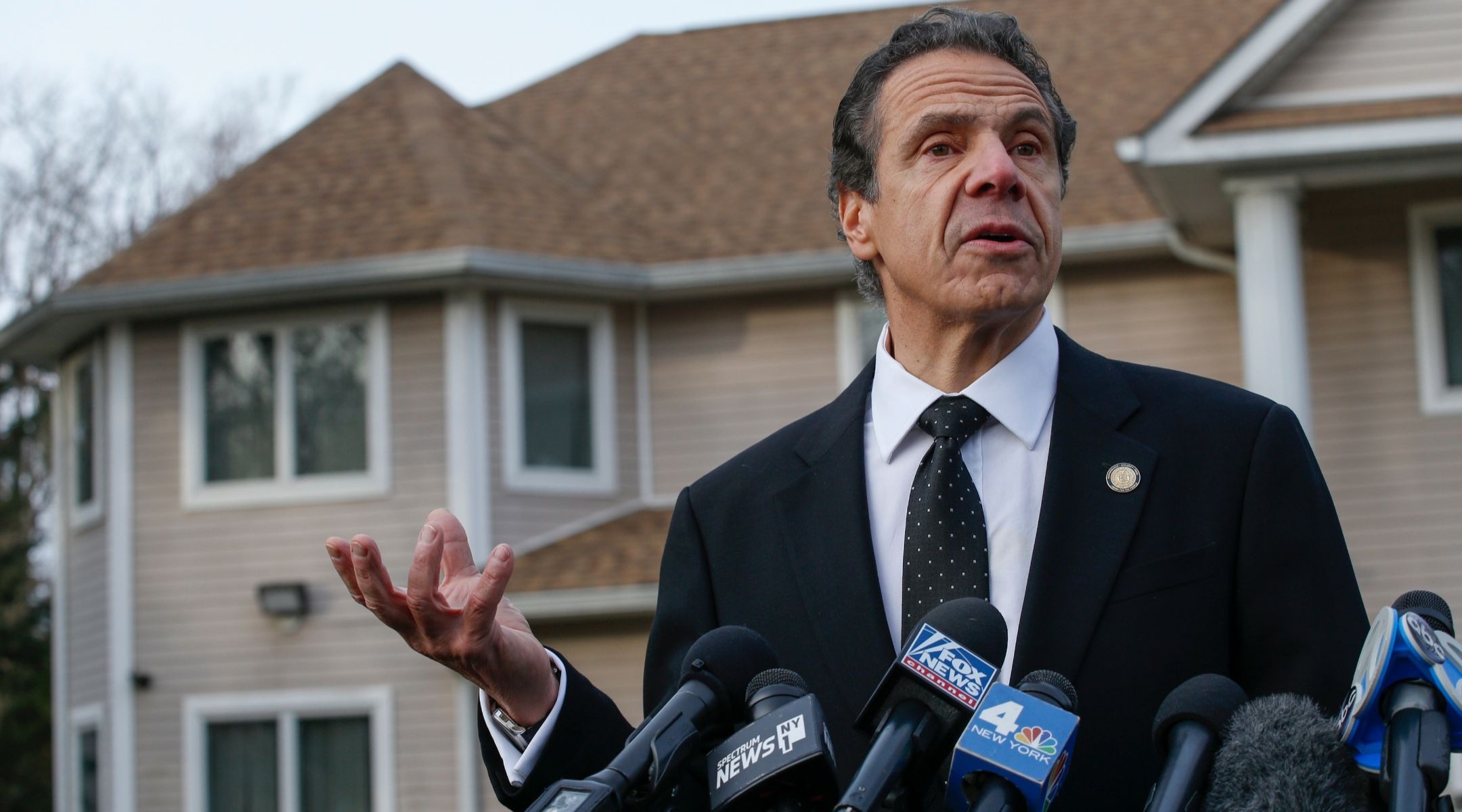
New York Gov. Andrew Cuomo talks to reporters outside the home of Rabbi Chaim Rottenberg in Monsey, N.Y., Dec. 29, 2019. Cuomo was speaking the morning after a stabbing attack at a rabbi’s home in the town that injured five. (Kena Betancur/AFP via Getty Images)
A wave of anti-Semitic violence prompts promises of action
Even before the shooters entered the Jersey City market, haredi (or ultra-Orthodox) Jews in New York City were experiencing a string of harassment and assault. Hasidic Brooklynites suffered head injuries, had their religious garb pulled off and saw their institutions vandalized. At an October 2019 meeting with Jewish leaders, a New York police official reported that anti-Semitic hate crimes were spiking in the city. Officials were at a loss to explain the rise.
“It’s difficult to make generalizations,” Deborah Lauter, who had just been appointed director of a new city hate crimes prevention effort, told JTA in September 2019. “When you look at escalation of swastikas on buildings, are these copycat attacks because they’re in the press a lot and perpetrators are inspired by that? Or are they being inspired by demonization of individuals and groups?”
The Jersey City attack was a shocking escalation. After killing the officer, the two shooters entered a small kosher supermarket and killed one of the owners, an employee and a customer. They reportedly had been hoping to strike the Jewish day school next door, and the attack shook the small and growing Hasidic community in a largely African-American neighborhood. Jews in the neighborhood began to question whether they had a future there.
“After the attack we were caught off guard because we didn’t know something like this existed in our community,” Yossi Berger, who moved with his family to Jersey City after being priced out of Williamsburg, told JTA last week. “The days after the attack, we were scared to walk on the street.”
It was the third fatal anti-Semitic attack in America in just over one year, coming after the synagogue shootings in Pittsburgh and Poway, California. It would not be the last. On Dec. 28, the seventh night of Hanukkah, a man walked into a crowded party at a rabbi’s house in Monsey and stabbed five people with a machete. He was stopped only when someone threw a coffee table at his head.
One of the victims entered a coma and, months later, died of his wounds. Coming after years of tension between Jews and their neighbors in the area, the attack shattered local Jews’ feelings of calm and safety.
“People are scared, people are still reeling, people are afraid,” Rivkie Feiner, a nonprofit strategist and activist from the area, said recently at an ADL conference. “People are very uncomfortable. It changed our way of life here. We were not used to having incidents like that here in Rockland [County] before, and it’s just very scary still.”
The attacks in and around New York came in a year when the ADL documented the most anti-Semitic incidents in the U.S. since at least 1979. Watchdogs warned in particular of a rising far-right threat, which some blamed on the rhetoric of President Trump, that had already motivated the two synagogue shootings. But December’s anti-Semitic violence did not appear to be connected to that. One of the Jersey City shooters was a Black Hebrew Israelite extremist and the Monsey stabber has been declared unfit to stand trial.
Following the attacks, action appeared to be swift. The march against anti-Semitism, organized quickly and endorsed by The New York Times editorial board, drew tens of thousands of people and a who’s who of elected officials under the slogan “No hate, No fear.”
Crossing over from Manhattan to Brooklyn, the march was meant to display unity between the non-Orthodox Jewish population and the haredi communities in Brooklyn. Relatively few haredi Jews attended, however, and one Orthodox speaker, Chaskel Bennett, said that “until today we really have not seen nearly enough sympathy or understanding for this sad reality, even from some of our own.”
The demonstration came amid pledges and action by Mayor Bill de Blasio and Gov. Andrew Cuomo to combat anti-Semitism. Cuomo promised more funding for security at Jewish institutions and supported a state domestic terrorism bill, while de Blasio vowed to continue to work to curb anti-Semitism in his city.
In 2019, police officers had begun patrolling Hasidic neighborhoods in greater numbers, and the mayor also launched the city’s Office for the Prevention of Hate Crimes — headed by Lauter, a former ADL executive. By February, it had a staff of seven and a budget of $1.7 million. Lauter began planning a curriculum for city schools; formed neighborhood safety coalitions composed of diverse activists in Williamsburg, Crown Heights and Borough Park; and directed funding to 16 nonprofits dedicated to fighting bigotry across demographics.
Shortly after the march, in February, Mitchell Silber, the NYPD’s former director of intelligence analysis, became head of the newly created Community Security Initiative, which was co-founded by the UJA-Federation and the local Jewish Community Relations Council. It was tasked with helping the area’s 2,000 synagogues, schools and the like invest in security and install safety features such as cameras and reinforced windows. The group also aimed to coordinate Jewish security across the city’s metro area and deepen ties to law enforcement.
Referencing the Israeli missile defense system, Silber told JTA that he planned “to create an Iron Dome for the Jews of New York.”
Lauter said she had been hopeful that change was afoot.
“I felt the momentum was there,” she said.
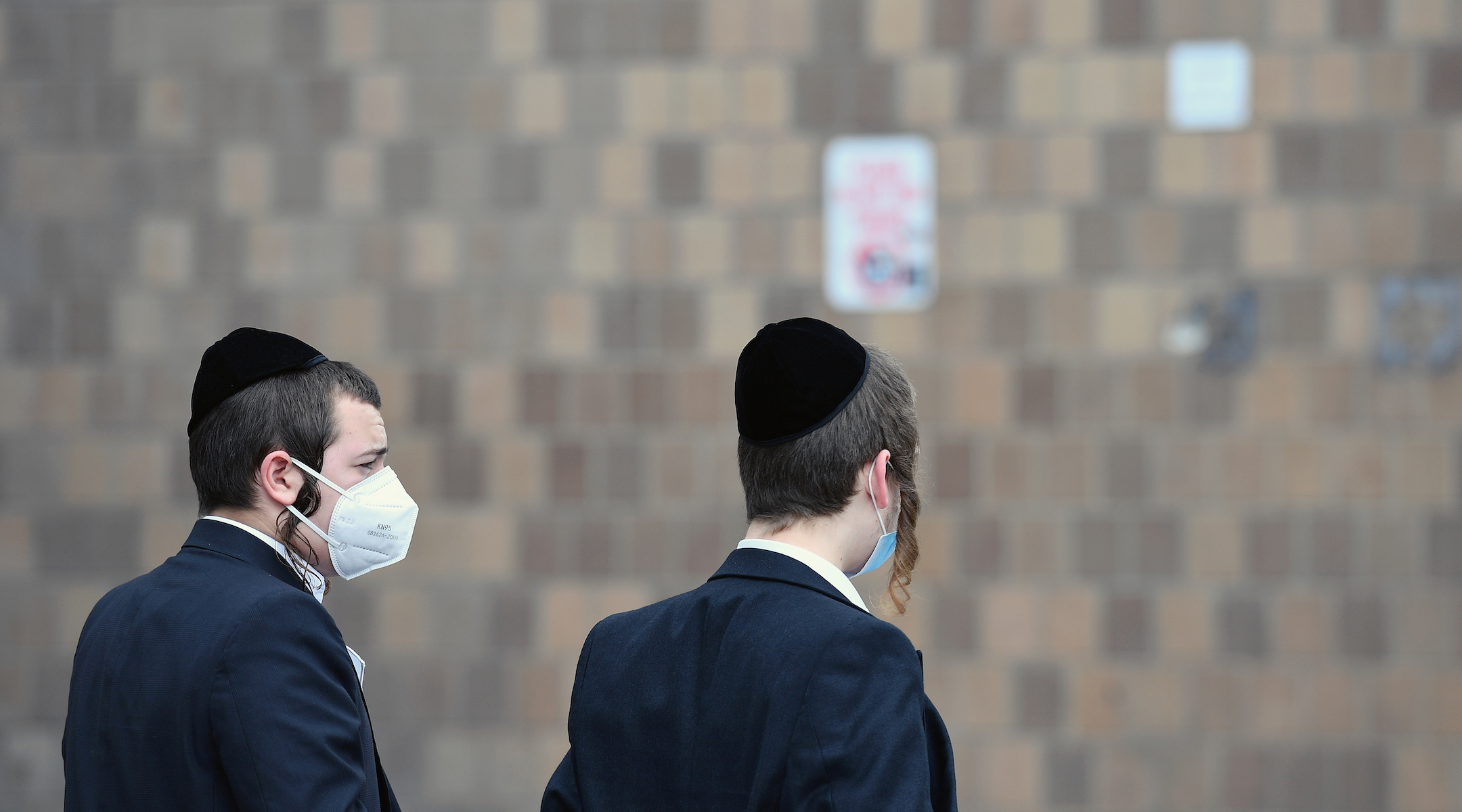
Two Orthodox Jewish men wear face masks in New York during the coronavirus pandemic, March 31, 2020. (Angela Weiss/AFP via Getty Images)
COVID shut down attacks — and hindered the fight against them
The number of hate crimes in New York City has dropped in 2020 but, officials acknowledge, it’s probably not just because of all the initiatives. With the city in lockdown for much of the spring, fewer people were on the street, which led to a decline in street harassment. According to the NYPD, there have been about half as many reported anti-Semitic hate crimes in 2020 as there were at this point in 2019 — 105 this year, as of last week, versus 208 last year.
The economic crisis that accompanied the pandemic also led to budget cuts for some, but not all, of the efforts to fight hate crimes. Cuomo passed a law in April, named after Joseph Neumann, the Monsey victim, that defined hate crime murders as domestic terrorism, and the state budget boosted funding for combating hate crimes.
Scott Richman, the new ADL New York-New Jersey director, said the bill “wasn’t just about rhetoric or communications. It was real money beside it.”
But the city slashed Lauter’s funding for nonprofits fighting bigotry. And her neighborhood safety coalitions have yet to launch. As coronavirus case numbers rose, so did discrimination against Asian-Americans, who were attacked for allegedly spreading the virus. In light of that spike, Lauter’s team shifted its focus to combating hate directed at Asian-Americans.
“The timing was so unfortunate,” she told JTA. “This was such an extraordinary time, and I felt frustrated that I wasn’t able to do enough, ultimately, in bringing people together to talk about it. The communities were so focused on their own needs.”
Brooklyn’s haredi Jews, meanwhile, were suffering from a severe COVID wave that overwhelmed their health care centers and devastated the community. And haredim say the pandemic also brought with it a new form of anti-Semitism: blaming Orthodox Jews for the spread of the pandemic.
Media reports highlighted Orthodox weddings and funerals that drew thousands of attendees. Articles about COVID that did not focus on Orthodox Jews nonetheless featured pictures of them. Haredi New Yorkers believed their community was being uniquely singled out, even though cases were rising across the city, and photos emerged of crowded parties and gatherings elsewhere in the five boroughs.
De Blasio contributed to that feeling in April, when he rage-tweeted about a crowded funeral procession in Orthodox Williamsburg, writing, “My message to the Jewish community, and all communities, is this simple: the time for warnings has passed.”
That month, the ADL documented a “significant increase” in social media posts that “blamed the Orthodox community for the spread of the virus.” Videos began circulating of people accosting haredi Jews on the street for breaking COVID regulations, as did reports of anti-Semitic harassment related to the COVID crisis.
While some of that harassment resulted in arrests, more seemed to go unchecked. And haredim also increasingly felt, over the course of the COVID crisis, that the officials who had pledged to protect them at the beginning of the year were now scapegoating them.
That sentiment was partly behind unrest in Brooklyn in October, when the Orthodox radio host and right-wing agitator Heshy Tischler riled up a crowd of haredim who had, over the course of a few days, burned masks in the street and assaulted onlookers. Local haredim said the rest of the community was unfairly blamed for the actions of a small group.
“There were members of the Jewish community who were not following the rules, but it was presented as the whole of the Jewish community, so there’s something sinister playing out there,” said Devorah Halberstam, an activist in Crown Heights whose son was killed in a 1994 anti-Semitic attack. She said the visuals in the media were “very troubling to me. So troubling to me that I shivered when I saw it.”
Cuomo, meanwhile, was criticized for name-checking the Orthodox community during his briefings about New York’s second wave of the pandemic. In one instance, he used a photo of a 2006 Hasidic funeral to warn about the dangers of gathering in 2020.
Yossi Gestetner, a haredi conservative political activist, lamented that “people in political office feel it’s OK to bash Orthodox Jews outright and as a group.” Gestetner had believed that Cuomo built a good relationship with the state’s haredim. But that has changed, he said.
“What Governor Cuomo has done in early and mid-October, making the resurgence of the virus about Orthodox Jews, is unforgivable,” he said.
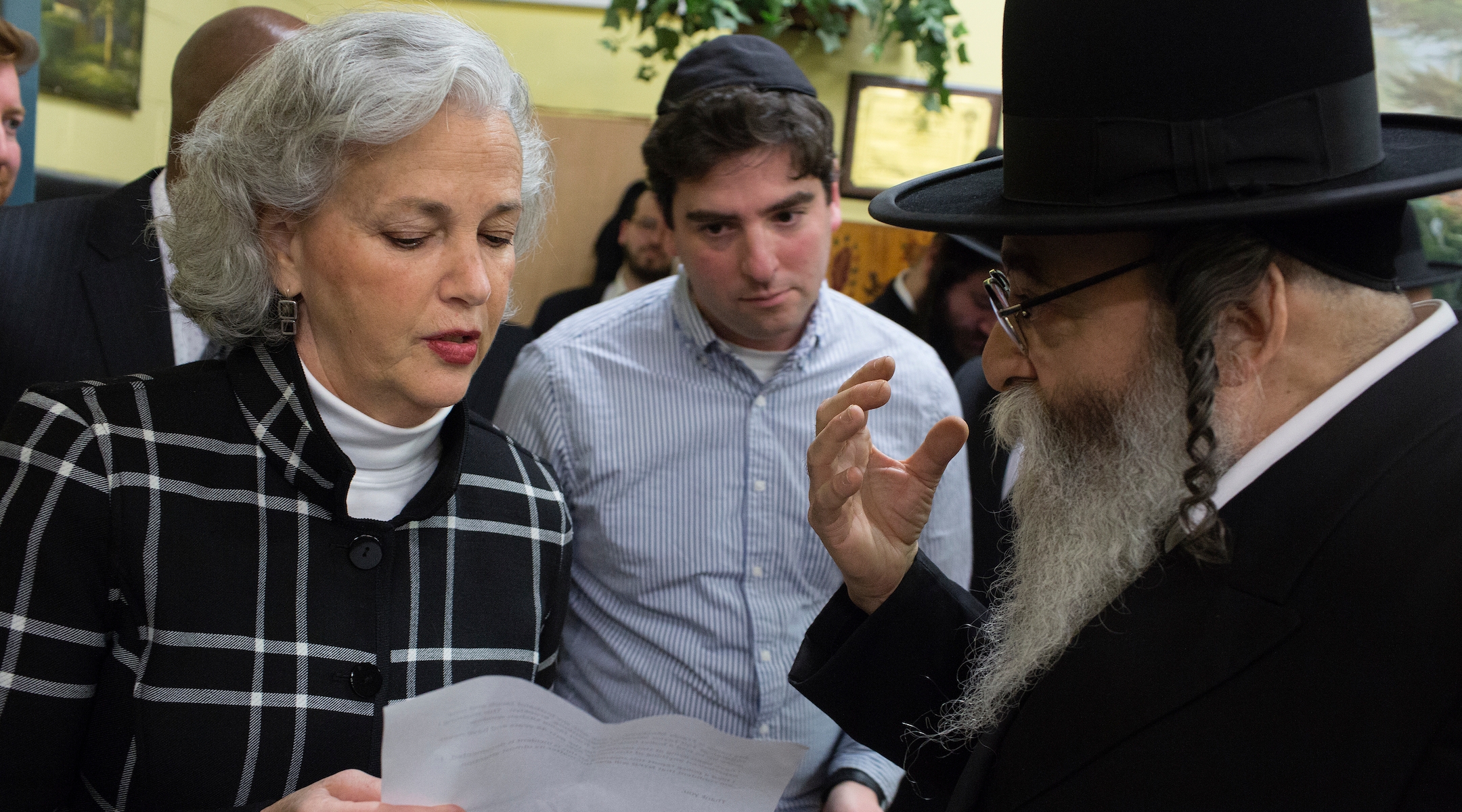
Deborah Lauter, the director of the New York City Office for the Prevention of Hate Crimes, attends a news conference in Brooklyn to denounce the deadly hate crime shooting in Jersey City, N.J., Dec. 12, 2019. (Andrew Lichtenstein/Getty Images)
Hopes for Jewish unity fizzle
The virus also hindered efforts toward solidarity between haredi and liberal Jews in New York. When haredim protested the state establishing restricted zones in their neighborhoods to curb the pandemic, liberal Jews organized to support the measures and expressed consternation at violations of social distancing in Orthodox neighborhoods.
The New York Jewish Agenda, a progressive group that had called out de Blasio’s tweets, posted a statement during the October Borough Park protests signed by 400 mostly non-Orthodox rabbis in support of the restrictions and condemning “the lack of compliance with public health directives and recent violent reactions from some individuals within the Orthodox Jewish community.”
Gestetner did not mention any groups by name, but said he felt that Jews who protested bigotry against other minority groups did not do enough to stick up for the Orthodox community.
“There are a few people within the tribe who pretend to care about the issue of bigotry when it involves immigrants or Muslims or Jews in general, who were either silent when this went on or even added fuel to the fire,” he said.
Matt Nosanchuk, who founded the New York Jewish Agenda, said the group is eager to join a united front to protest anti-Semitism and has repeatedly protested bigotry against Orthodox Jews. But he said the group wants to show there is Jewish support for coronavirus restrictions and will not be shy about saying so.
“Our goal was to make sure it was clear that the Jewish community was not monolithic in its response to the social distancing precautions,” he said. “Where we can find opportunities for common ground, we will do so. But when we have policy disagreements with certain parts of the Jewish community, we’re not going to be silent.”
Ritual Jewish responses to the pandemic also differed according to denomination. Most non-Orthodox synagogues and other institutions quickly migrated their services and programs to Zoom, shuttering their buildings indefinitely. Haredi synagogues and their advocates, meanwhile, strove to keep their synagogues, schools and camps open as long as possible, and launched a series of court battles to fight state restrictions on religious gatherings. A recent U.S. Supreme Court decision delivered a major victory to an Orthodox group challenging limits on synagogue attendance in New York.
Haredim in New York also told JTA that they chafed at calls from Jewish activists and others earlier this year during widespread racial justice protests to defund the police. While activists who use the term say it does not refer to a wholesale abandonment of public safety measures, haredi Jews were among those who worried that the slogan called for an end to police departments, which they view as their first line of defense against street attacks.
“Whatever goodwill or bridge-building that had started, that has been put on the back burner as everyone has hunkered down in their own communal concerns and conflicts,” said Shani Bechhoffer, a haredi educator in the Monsey area, regarding Monsey Jews’ relations with their non-Jewish neighbors. “And then of course the haredim feel betrayed because they believe the liberal Jews are in favor of defunding the police, which could leave us vulnerable to anyone who wants to come around with a machete.”
Yochonon Donn, an editor for two haredi publications, told JTA that the hopes for unity expressed at the January march were nice sentiments that could not overcome deep divisions within New York’s Jewish population. He mentioned “defunding the police,” as well as liberal Jewish support for secular educational requirements in haredi schools.
“The talk of unity never really got off the ground,” Donn said. “The differences are too great. The Orthodox community is very conservative and the non-Orthodox community is very liberal.”
He added: “When it comes to all the things that we care about, they’re fighting us on every level.”
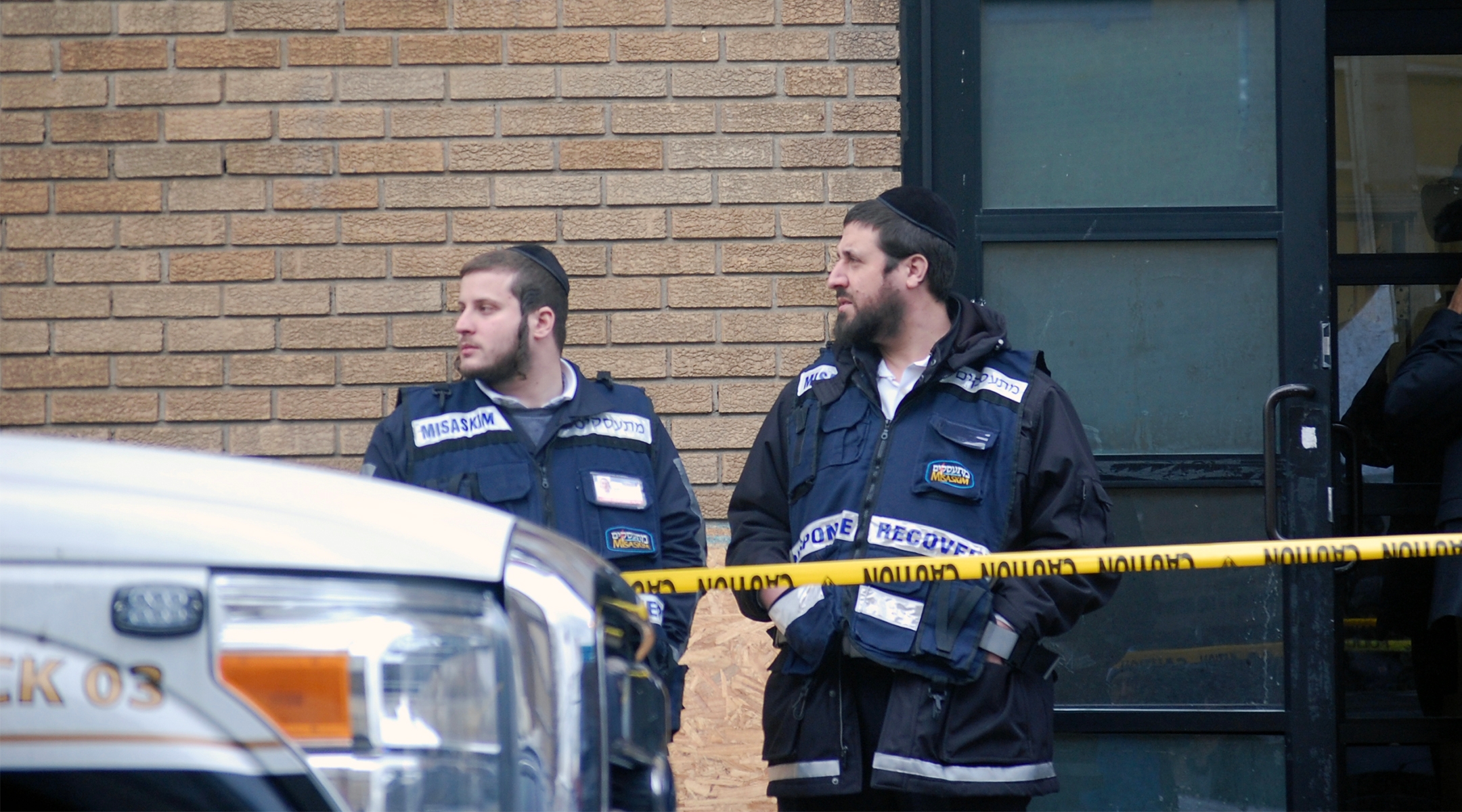
Hasidic members of Misaskim, which provides services for the care of the dead, stand in front of the K’hal Adas Greenville synagogue in Jersey City next door to the JC Kosher Supermarket, the site of the deadly shooting that left three dead, Dec. 11, 2019. (Laura E. Adkins/JTA)
Looking ahead to a year of division and possibly even more hate
As New Yorkers begin thinking about a post-COVID world, those who monitor anti-Semitism worry that a return to street life will mean a return of anti-Semitic attacks. And this time, resentments and prejudices could linger from the pandemic, exacerbating interethnic tensions that predate 2020.
“I hope it doesn’t lull people into a false sense of security,” Silber said. “You’re seeing fewer people act out in the physical world because of the COVID environment, but what you’re also seeing is people spending a tremendous amount of time online in extremist forums. When COVID ends, you’re going to have a lot of people who have been radicalized.”
He added, “They’re going to be looking for scapegoats. And as we’ve already seen in some of the memes and the talk in social media, Jews are a convenient scapegoat for COVID.”
Organizations that work for intra-Jewish unity say that terrain remains punishing, too. Michael Miller, a longtime local Jewish leader who helped organize the January march, said the national climate of polarization, in addition to COVID, has made the job of internal Jewish cooperation unprecedentedly difficult.
“It’s much more challenging today than it’s been in my 30-year career at the organization,” said Miller, the executive director of New York’s Jewish Community Relations Council. “The community is much more highly diverse and the country is much more highly polarized, and therefore the admixture of diversity and polarization, both internal and external, requires full-time attention.”
One exception to the environment of rising tensions appears to be in Jersey City, where the small Jewish community is growing again and the grocery store has reopened in a different location. Berger, the Jersey City resident, said the neighborhood is quieter than Williamsburg and that COVID provoked less distrust because the Jewish community is smaller and restrictions weren’t as strict as they were in New York.
“People were friendly to us, were trying to comfort us,” he said of his non-Jewish neighbors following the shooting. “As the weeks went by, we got the friendship and the comfort from the community.”
That sense of comfort is not universal, though. In Monsey, Bechhofer said Jews have remained on guard since the stabbing and are bracing themselves for potential future attacks.
“It feels like it was something that was there in a large amount and we’re seeing the tip of the iceberg,” she said. “I’ve heard people talk about buying guns for self-defense. There is a general sense that a reckoning is coming.
“The lack of understanding and mistrust — something has to be done to address it now more than ever.”
Bernstein shares the anxiety that a future attack could be looming. This year, he left the ADL to helm the Community Security Service, which trains ordinary congregants to patrol their synagogues and protect against attackers. He said the anti-Semitism of the current era has taught him that if there had been a golden age of Jewish safety in America, it’s over now.
“It keeps me up at night,” Bernstein said. “We are concerned that there will be an uptick in all the trends [from] before COVID. We’re not going in the right direction.”
JTA has documented Jewish history in real-time for over a century. Keep our journalism strong by joining us in supporting independent, award-winning reporting.
